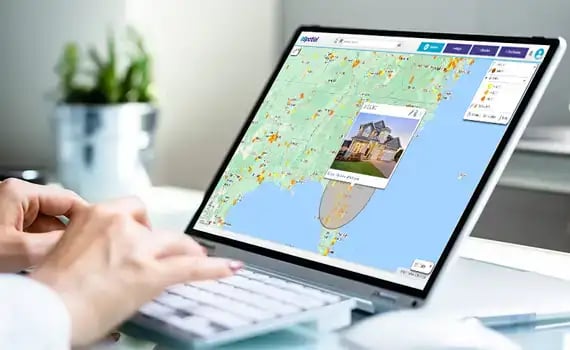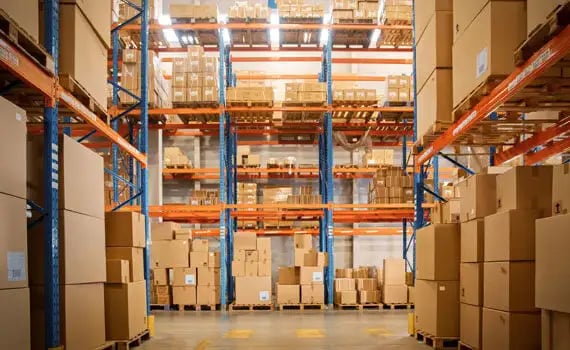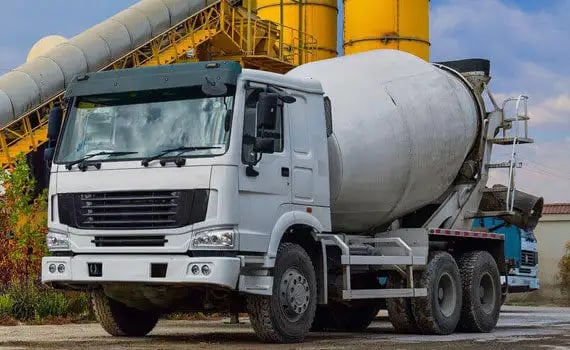Maps have been used since ancient civilizations to help navigate and understand the world. Paper and parchment have advanced to digital maps capable of interacting with geospatial data and visualization, known as spatial mapping. So, what is spatial mapping, and how is it used today?
Simply put, spatial mapping captures and displays geospatial data on different industries' maps to visualize business operations, customers, locations, and assets. In this guide, you will learn more about geospatial data mapping, how it works, and some of the industries where it’s bringing revolutionary change. You’ll also learn the easy steps required to create a geospatial map so you can visualize and analyze data. Let’s dive in.
What is spatial mapping?
Spatial mapping is the digital construction and visualization of maps representing geographical distributions and connections from raw geospatial datasets. In other words, spatial mapping is the visual representation of geographical information on maps. It involves collecting raw geospatial data about the locations and characteristics of real-world objects and features through satellite imagery, GPS, or surveys and then relies on geo-mapping as a visual aid. So, what is geo-mapping exactly?
Geomapping refers to the process of assigning geographic identifiers to spatial datasets and displaying them on digital map platforms for visualization. By making maps of the real world, spatial maps create virtual worlds that resemble real roads and points of interest in a geographic space.
Geospatial mapping explains how the GPS on your phone or vehicle works to help you navigate or how engineers know the right place to construct a bridge. Before spatial mapping, people used traditional paper-based maps to represent geographic information.
Technological advancements make spatial map representations far more powerful, dynamic, and scalable than static paper map representations. As you’ll discover further in this article, geospatial mapping is indispensable as it solves complex issues related to mobility, infrastructure, the environment, and community services.
Use cases for spatial mapping
Spatial mapping's ability to digitally capture and visualize environments and determine precise locations within mapped spaces makes it essential in many industries. But what is geospatial mapping used for the most? It’s an exciting technology that has driven advances like autonomous vehicles, enabling archeological preservations, complex surgeries, and other transformative applications. Here are some industries that are being revolutionized by spatial mapping.

Healthcare
What is a spatial map used for in the healthcare industry? In healthcare institutions, spatial mapping allows providers to visualize patient data, demographics, and other clinical data on interactive maps. At eSpatial, our clinical mapping software allows healthcare providers to layer different datasets on the maps to help them compare patterns and trends and serve patients better.

Tech and Software
Spatial context and location analytics are useful in the infrastructure, sales, and product development for tech and software. Tech businesses that use mapping software optimize their operations and offer better customer support. Mapping customer locations and technician territories improves field operations, allocates resources, and prioritizes jobs.
Tech and software companies can use our territory, routing, and mapping software to plan and optimize routes for field-based staff, such as sales reps. The maps also help maximize time with customers and reduce costs.

Financial Services
Successful financial institutions understand customer needs and mitigate risks. Spatial mapping enables data-driven insights, while spatial analytics provide location intelligence. Visualizing asset locations and risks also helps with loan portfolio management and real estate lending.
Bank managers use maps to optimize client territories and uncover more business opportunities. With maps, financial institutions suffer fewer risks as they help in fraud detection, economic impact analysis, and regulatory reporting compliance. Transform your financial data into interactive maps and understand customer behavior and risk factors through our eSpatial market analysis mapping software for financial services.

Real Estate
Real estate professionals rely on spatial maps for accurate insights into real estate markets. Experts can uncover trends and competitive insights about property markets and assets by integrating specific datasets into maps.
The real estate sector uses location intelligence to use maps for site selection, market analysis, property valuation, sales, and leasing. Let our eSpatial mapping software for real estate organizations help you with property searches, visual representation, and market analysis to give you a competitive edge.

Supply Chain Logistics
Manufacturers need fresh insights to make strategic decisions in a highly volatile business environment like today’s, where many businesses face the threat of going bankrupt. Spatial mapping can help supply chains gain locational visibility and insights to better understand demand patterns and customer behaviors.
Spatial tools also help with warehouse optimization, routing, and demand forecasting. Optimizing warehouse and distribution locations and delivery routes reduces transportation and logistics costs. Inventory and transportation management rely on maps to identify location issues and bottlenecks. With mapping software for manufacturers, you can gain 360-degree visibility into potential risks and improve your supply chain logistics.

Construction
Spatial mapping is instrumental in construction when it comes to planning, site analysis, and risk management. Mapping tools allow analysis of topography, geology, soil composition, and other factors to assess site suitability.
Mapping software in the construction industry helps design infrastructure networks and better project management through geographic context. Construction engineers also use maps to analyze soil, groundwater, and potential disasters.
How to Create a Geospatial Map
A complete geo-mapping definition should cover the mapping, visualization, and analysis of data on digital platforms. However, there’s no singular way to create geospatial maps, as the process differs depending on objectives, purpose, and data sources. It’s important to note that the quality of the insights obtained from geospatial analysis relies on the quality of your input data.
Step 1
Define Your Objective
You must first define your objectives to focus on why you need the mapping project. Define the questions the map will answer, its audience and their needs, the required data layers, optimal display techniques, desired conclusions, and metrics for success. These objectives will help in setting priorities.
Step 2
Choose a Mapping Software
When choosing mapping software, you need to consider a few factors. First, ensure the software can create the necessary map types, such as heat maps, buffer maps, and routing maps. Different kinds of maps allow you to visualize and understand your geospatial data best.
Next, check compatibility with important data sources and formats to facilitate the import of location data. You may also need to check reviews and client testimonials. Select a vendor committed to ongoing innovation to futureproof your investment and needs.
Step 3
Collect and Prepare Data
Collecting and structuring quality data correctly lays the foundation for insightful geospatial analysis and visualization. Identify relevant datasets such as location coordinates, addresses, and other information.
Next, compile the data from various sources, such as spreadsheets, databases, or existing GIS files. Then, assess the data to ensure it’s complete, accurate, and uniform. You'll then need to structure the files with unique identifiers and standardized address and location fields to geocode them onto the map.
Step 4
Set up Your Parameters
Parameters are important for your maps as they ensure correct data display without distortion and maintain the accuracy of the spatial analysis. Setting up key parameters ensures your map displays and analyzes data properly based on your objectives. Choose an appropriate base map that provides spatial context for your region of interest.
Step 5
Analyze the Results
Analyzing the final results is exciting as it helps verify if the maps achieved the intended purpose and objectives. Visually review the final map, use analysis tools to extract quantitative insights, and compare different datasets overlapped on the map. Note any unusual hotspots requiring investigation and export results for validation and documentation.
Mapping solutions for businesses from eSpatial
Are you seeking advanced spatial analytics tools to help your business glean deep insights from location data through heat mapping and routing? Our eSpatial mapping software helps visualize your Excel, CRM, or ERP data for better business decisions through actionable insights.
Getting clear insights from data is an extremely reliable way to improve business operations, which is why every business that pulls data from varied sources could benefit from spatial mapping to improve operations, predict trends, serve customers better, and reduce risks, among other advantages.
Healthcare, construction, real estate, manufacturing, tech, and software are just some of the industries that benefit from mapping solutions. Don’t let your data go unutilized. Learn how our customizable mapping software solutions can support your unique needs, from scalable data management to customizable analytics dashboards. Contact us today to start optimizing your business with spatial mapping.
 by
by 
